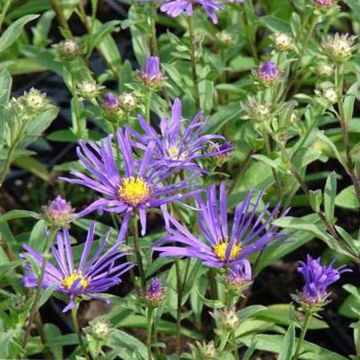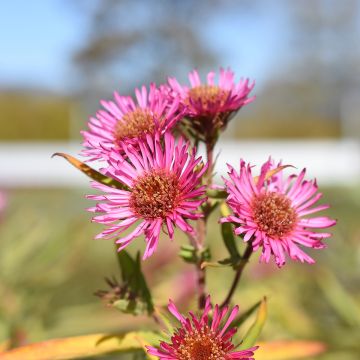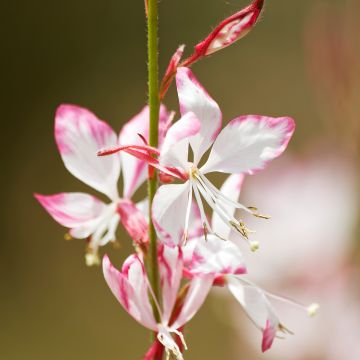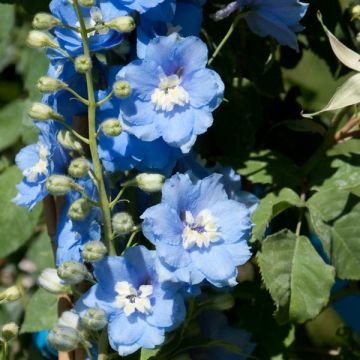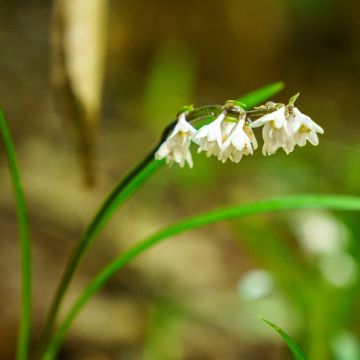

Aster divaricatus Tradescant
Aster divaricatus Tradescant
Aster divaricatus Tradescant
White wood aster, Eastern star, Woodland aster
This item cannot be shipped to the selected country
Delivery charge from €5.90
Delivery to Corse prohibited
More information
Schedule delivery date,
and select date in basket
This plant carries a 12 months recovery warranty
More information
We guarantee the quality of our plants for a full growing cycle, and will replace at our expense any plant that fails to recover under normal climatic and planting conditions.
From €5.90 for pickup delivery and €6.90 for home delivery
Express home delivery from €8.90.
Delivery to Corse prohibited: UE law prohibits the import of this plant from mainland France to Corse as part of the fight against Xylella fastidiosa. Please accept our sincere apologies.
More information
Does this plant fit my garden?
Set up your Plantfit profile →
Description
Aster divaricatus 'Tradescant' is a beautiful variety of divaricate aster, recently renamed Eurybia divaricata. More colourful and upright than the wild species, this cultivar tolerates shaded conditions just like its ancestor, making it valuable for ornamenting woodland gardens or beds exposed to the north or east. It quickly forms beautiful clumps with purplish stems adorned with large olive-green leaves, which remain in bloom for a long time with a thousand small stars ranging from white-pink to pink-purple. It is a beautiful perennial plant for the end of summer, highly appreciated in floral art for its delicacy. Hardy and carefree, perfect for wild or low-maintenance gardens.
Aster divaricatus belongs to the Asteraceae family. It is native to the Appalachians and clearings in Canada (eastern North America). This deciduous perennial develops from spring and dies down in winter. The 'Tradescant' cultivar quickly forms a beautiful upright but flexible and spreading clump, reaching 50cm (20in) in height when flowering, with a similar spread. The generous and prolonged flowering usually takes place from July-August to September-October. The inflorescence is a head with peripheral ligulate flowers that are white-pink when they open, darkening slightly when mature. The central flowers (the heart) are bright yellow, then turn light purple. Together, they form bouquets of great lightness, composed of countless tiny stars with very fine "branches". This aster develops strong and branching dark purple zig-zag stems, forming a superb contrast with the light olive-green foliage. The leaves are wide at the base, pointed at the tip, and turn purple in the sun and at the end of the season. This plant quickly spreads through branching rhizomes that lengthen and become woody with age.
It is impossible to imagine our gardens without asters. 'Tradescant' is charming, unassuming, and truly undemanding. It pairs very well with all other plants, in partial shade or in full sun. Only excessively dense and dry shade prevents it from flowering. It can be planted with Japanese anemones or with Aster cordifolius, another aster that likes woodland areas, and its cultivars 'Ideal' or 'Little Carlow'. With its knotty stems and its flexible and spreading habit, this slightly trailing aster forms a superb ground cover. It will give its best when planted in groups, in large beds at the base of trees or bushes. It can also be planted with other robust shade-loving perennials like Ligularia dentata 'Desdemona' or Trachystemon orientalis.
Report an error about the product description
Aster divaricatus Tradescant in pictures
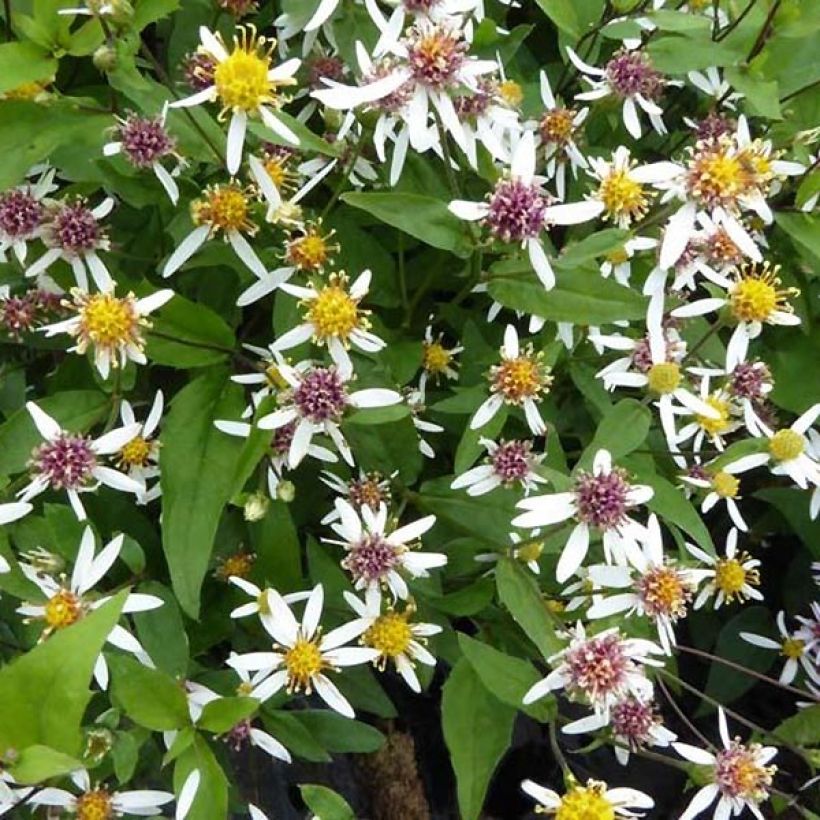



Flowering
Foliage
Plant habit
Botanical data
Aster
divaricatus
Tradescant
Asteraceae
White wood aster, Eastern star, Woodland aster
Eurybia divaricata
Cultivar or hybrid
Other Asters
Planting and care
This accommodating plant is insensitive to powdery mildew, a common disease in many asters. Plant it in autumn or spring in ordinary, fairly rich soil, moderately moist to occasionally dry. It appreciates a semi-shade exposure, but tolerates full shade. It proves more floriferous in full sun, without being scorching, as it fears arid situations. This aster is the only one that thrives near the not too powerful roots of trees and bushes. Protect it from strong winds that could flatten the clumps. Once established, it should not be moved as it does not appreciate changes. In a bed, respect a spacing of at least 60cm (24in) between the plants. Divide the clumps every three years so that they remain floriferous.
Planting period
Intended location
Care
This item has not been reviewed yet - be the first to leave a review about it.
Summer flowering perennials
Haven't found what you were looking for?
Hardiness is the lowest winter temperature a plant can endure without suffering serious damage or even dying. However, hardiness is affected by location (a sheltered area, such as a patio), protection (winter cover) and soil type (hardiness is improved by well-drained soil).

Photo Sharing Terms & Conditions
In order to encourage gardeners to interact and share their experiences, Promesse de fleurs offers various media enabling content to be uploaded onto its Site - in particular via the ‘Photo sharing’ module.
The User agrees to refrain from:
- Posting any content that is illegal, prejudicial, insulting, racist, inciteful to hatred, revisionist, contrary to public decency, that infringes on privacy or on the privacy rights of third parties, in particular the publicity rights of persons and goods, intellectual property rights, or the right to privacy.
- Submitting content on behalf of a third party;
- Impersonate the identity of a third party and/or publish any personal information about a third party;
In general, the User undertakes to refrain from any unethical behaviour.
All Content (in particular text, comments, files, images, photos, videos, creative works, etc.), which may be subject to property or intellectual property rights, image or other private rights, shall remain the property of the User, subject to the limited rights granted by the terms of the licence granted by Promesse de fleurs as stated below. Users are at liberty to publish or not to publish such Content on the Site, notably via the ‘Photo Sharing’ facility, and accept that this Content shall be made public and freely accessible, notably on the Internet.
Users further acknowledge, undertake to have ,and guarantee that they hold all necessary rights and permissions to publish such material on the Site, in particular with regard to the legislation in force pertaining to any privacy, property, intellectual property, image, or contractual rights, or rights of any other nature. By publishing such Content on the Site, Users acknowledge accepting full liability as publishers of the Content within the meaning of the law, and grant Promesse de fleurs, free of charge, an inclusive, worldwide licence for the said Content for the entire duration of its publication, including all reproduction, representation, up/downloading, displaying, performing, transmission, and storage rights.
Users also grant permission for their name to be linked to the Content and accept that this link may not always be made available.
By engaging in posting material, Users consent to their Content becoming automatically accessible on the Internet, in particular on other sites and/or blogs and/or web pages of the Promesse de fleurs site, including in particular social pages and the Promesse de fleurs catalogue.
Users may secure the removal of entrusted content free of charge by issuing a simple request via our contact form.
The flowering period indicated on our website applies to countries and regions located in USDA zone 8 (France, the United Kingdom, Ireland, the Netherlands, etc.)
It will vary according to where you live:
- In zones 9 to 10 (Italy, Spain, Greece, etc.), flowering will occur about 2 to 4 weeks earlier.
- In zones 6 to 7 (Germany, Poland, Slovenia, and lower mountainous regions), flowering will be delayed by 2 to 3 weeks.
- In zone 5 (Central Europe, Scandinavia), blooming will be delayed by 3 to 5 weeks.
In temperate climates, pruning of spring-flowering shrubs (forsythia, spireas, etc.) should be done just after flowering.
Pruning of summer-flowering shrubs (Indian Lilac, Perovskia, etc.) can be done in winter or spring.
In cold regions as well as with frost-sensitive plants, avoid pruning too early when severe frosts may still occur.
The planting period indicated on our website applies to countries and regions located in USDA zone 8 (France, United Kingdom, Ireland, Netherlands).
It will vary according to where you live:
- In Mediterranean zones (Marseille, Madrid, Milan, etc.), autumn and winter are the best planting periods.
- In continental zones (Strasbourg, Munich, Vienna, etc.), delay planting by 2 to 3 weeks in spring and bring it forward by 2 to 4 weeks in autumn.
- In mountainous regions (the Alps, Pyrenees, Carpathians, etc.), it is best to plant in late spring (May-June) or late summer (August-September).
The harvesting period indicated on our website applies to countries and regions in USDA zone 8 (France, England, Ireland, the Netherlands).
In colder areas (Scandinavia, Poland, Austria...) fruit and vegetable harvests are likely to be delayed by 3-4 weeks.
In warmer areas (Italy, Spain, Greece, etc.), harvesting will probably take place earlier, depending on weather conditions.
The sowing periods indicated on our website apply to countries and regions within USDA Zone 8 (France, UK, Ireland, Netherlands).
In colder areas (Scandinavia, Poland, Austria...), delay any outdoor sowing by 3-4 weeks, or sow under glass.
In warmer climes (Italy, Spain, Greece, etc.), bring outdoor sowing forward by a few weeks.

































